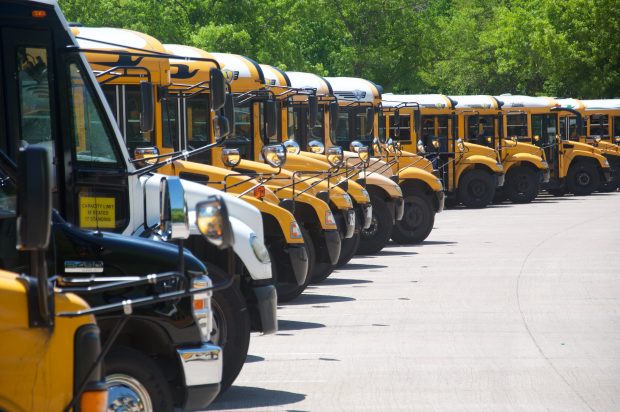New Jersey Future Blog
School district regionalization is an educational quality issue—and a cost-saving issue, and a land-use issue, and a segregation issue
October 13th, 2021 by Tim Evans

Photo Credit: Dan Dennis-UnSplash
New Jersey’s system for delivering public education is particularly fragmented—it averages 28 school districts per county,1 the most of any state, and averages just under 15,000 residents per district, well below the national average of 23,344. It has more school districts than it has municipalities. This fractionalized landscape contributes to and exacerbates several of the state’s most intractable problems in ways that are not immediately apparent.
Last month, the Corporation for NJ Local Media hosted a webinar entitled “School Regionalization, and What It Could Mean for Your Community,” at which panelists discussed a bill (S3488) sponsored by Senate President Sweeney and others that aims to consolidate school districts that are already engaged in some sort of sharing arrangement (as when multiple K-8 districts all send to a regional high school with its own district). Such consolidations have the potential to affect as many as 275 school districts. The bill has passed both chambers of the legislature and awaits the governor’s signature.
The panelists focused primarily on the inconsistencies and inefficiencies that are introduced into the quality and costs of education by having so many small districts. When children come to a regional high school from multiple elementary schools that are each operated by their own individual districts, the lack of a uniform curriculum across the feeder elementary schools can create challenges for teachers in the high school. Feeder schools can also vary widely in terms of their ability to hire teachers with specialties in certain subjects, since the small size of the districts introduces greater variability into the size and composition of the tax bases from which the districts must raise revenues.
Merging school districts is most often promoted as a cost-saving measure, streamlining top-heavy administrative structures and creating economies of scale in the construction of school buildings, the hiring of teachers, the utilization of classroom space, and the transportation of students. The state’s school costs are indeed conspicuously high. New Jersey spends more per capita on public elementary and secondary education than all other states besides New York and Vermont—about $3,200 per capita as of the 2019 Annual Survey of State and Local Government Finances. This is 50% higher than the national average of $2,186 per capita.
Because New Jersey is so dependent on property taxes for raising revenue, and because school taxes represent the lion’s share of the overall property tax bill, the state’s high spending on education translates into the nation’s highest property tax bills—a median tax bill of $8,432,2 more than triple the nationwide median of $2,578, and substantially outpacing second-place Connecticut at $6,004. Consolidating school districts could help reduce duplicative expenditures and bring property tax increases under control.
But as New Jersey Future has written previously, school district consolidation is more than just a cost-saving measure; it could also help tame the state’s high housing costs and the resulting out-migration of people to less expensive states. Because New Jersey’s property tax bills are already so high, municipal leaders try to discourage residential development that might attract households with school-age children into town, necessitating increased school spending and subsequent property tax hikes. This widespread resistance contributes to a statewide undersupply of housing, putting upward pressure on home prices and chasing lower-earning households, including many young adults, out of the state in search of cheaper housing elsewhere.
The small size of the state’s districts may also contribute to New Jersey’s status as one of the most segregated states in the country—both by income and by race—despite being one of the most diverse states as a whole. In seeking to deter residential development through exclusionary zoning, many municipalities render themselves unaffordable to all but upper-income households, which reinforces racial segregation. Last year, New Jersey Future compared New Jersey to nearby states where public education is organized differently and found that concentrated poverty is more prevalent in counties with more fragmented public education systems than in states where school districts are county-wide or shared by larger numbers of municipalities. And, because segregation by income and segregation by race often coincide, counties with less fragmented school systems also tend to have much lower degrees of segregation for Black and Hispanic residents.
If New Jersey wishes to promote social equity by dismantling the processes that perpetuate residential segregation, mitigating its exclusionary land use incentives by organizing and funding public education at a higher level of government may be a good place to start.
There are multiple reasons to support the Sweeney school district consolidation bill. By itself, it will not solve New Jersey’s property tax, housing costs, or segregation issues, but it would be an important step in the right direction on all of these fronts.
12017 Census of Governments
2 2019 American Community Survey, one-year estimates
















